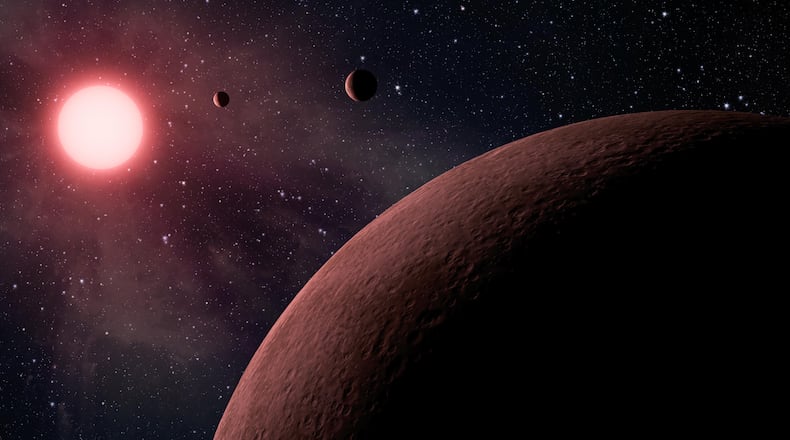NASA unveiled its most comprehensive findings from its Kepler space telescope mission Monday, including the discovery of 219 new exoplanets, 10 of which are similar in size to Earth and could potentially have life.
» RELATED: 7 things to know about the rare total solar eclipse crossing the nation this August
The results are part of the final catalog of data released from Kepler's first four years in space (2009-2013) and boosts the total of exoplanets in the galaxy to 4,034.
The ten rocky, Earth-size planets orbit “in their star's habitable zone,” (the so-called “Goldilocks zone”) meaning they could potentially support liquid water, Kepler scientist Mario Perez said in a Monday news conference in Silicon Valley, California.
» RELATED: Follow NASA’s Kepler and K2 missions
The presence of liquid water is considered a key ingredient to the existence of life.
"Many of the new planet candidates are likely to have small rocky cores enveloped by a thick atmosphere of hydrogen and helium, and some are thought to be ocean worlds," NASA shared in its Tumblr blog.
The Kepler data set is the only set containing a catalog of these near Earth-sized planets with roughly the same orbit, according to Perez.
» RELATED: Amazing NASA photos through the years
“Are we alone? Maybe Kepler today has told us indirectly, although we need confirmation, that we are probably not alone,” Perez said.
Only three planets in our solar system are within the habitable zone of the sun: Mars, Venus and Earth. "I would only want to live on one of those," Kepler research scientist Susan Thompson told CNN.
Kepler's latest findings only account for a tiny part of the galaxy (a patch of sky in the Cygnus constellation) and before it launched, scientists expected the frequency of Earth-like planets to be about one percent of the stars, Alan Boss, astronomer at the Carnegie Institution, told ABC News.
But according to Kepler scientists, the number is closer to 60 percent.
» RELATED: This is the most accurate map of the Great American Eclipse’s path of totality to date
As Kepler’s first mission comes to a close in 2018, scientists are calling its finality a new beginning.
“It’s amazing the things that Kepler has found,” Thompson said in a press conference. “It has shown us these terrestrial worlds, and we still have all this work to do to really understand how common Earths are in the galaxy.”
About the Author
The Latest
Featured


